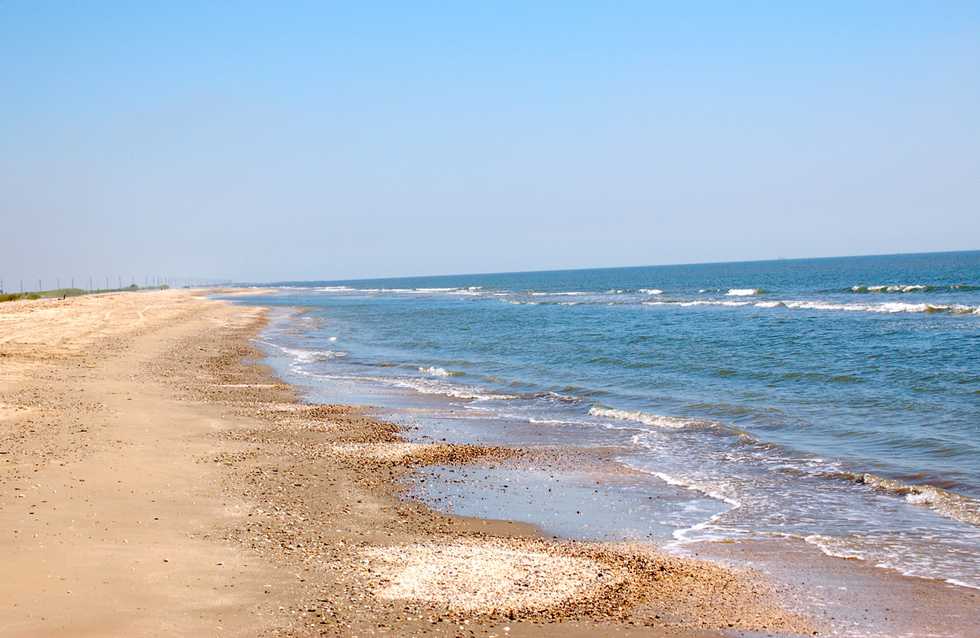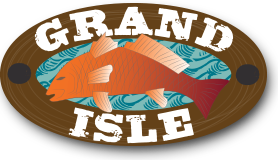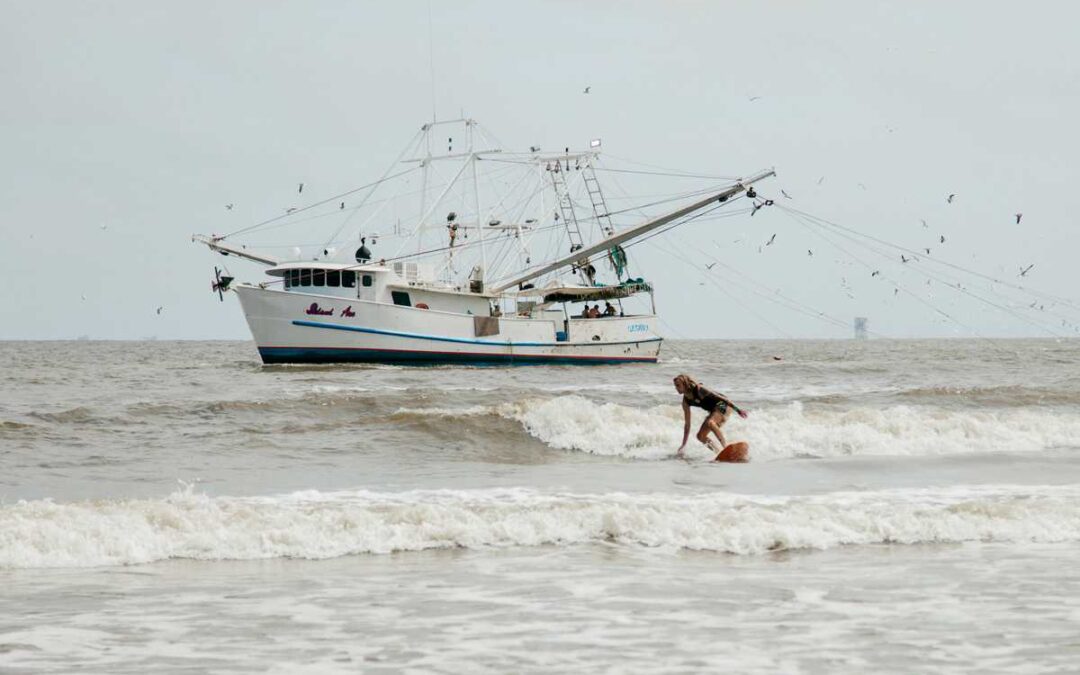Jordan LaHaye Fontenot
https://countryroadsmagazine.com/travel/outdoor-adventures/surfing-louisiana-beaches/
MAY 22, 2019
In the summer of 1964, the Beach Boys’ “I Get Around” spent two weeks at the top of the charts. American International Pictures was gearing up to release its third “beach party” film, called Bikini Beach––nurturing a nationwide nostalgia for teenage, sun-soaked freedom. And after a few years of religiously watching The Baileys of Balboa every Thursday night in hopes of catching a surf scene, an infatuated 22-year-old Billy Hingle, of Pointe à la Hache, Louisiana, bought himself a surf board and headed for the nearest beach.
“I don’t know if anyone had ever tried before I did,” said Hingle, now 77 years old. “The locals would stop me and tell me they had never seen anyone do it before. I’ve always assumed I was the first person to surf Grand Isle.”
In those first few years, Hingle was always searching out better spots, better breaks. He discovered that the surf at the nearby Port Fourchon’s beach was about a foot higher than at Grand Isle’s. Local legend has it that the very spot was once the iconic surfing destination in Louisiana, that during the seventies, you might see up to forty people on the water at a time. Danny Wray, the 64-year-old owner of Calmwater Charters, remembers it: “The waves broke a lot better in Fourchon than Grand Isle, and we had a pretty good surf cult going on down here,” he said. “A bunch of guys who worked offshore, week on, week off—we’d meet at a camp, grab a bunk. We’d go fishing, try to catch waves while we were out there. I’m the only one still going out there from that crowd. Now, it’s just me and a couple of dolphins.”
“I’M THE ONLY ONE STILL GOING OUT THERE FROM THAT CROWD. NOW, IT’S JUST ME AND A COUPLE OF DOLPHINS.”
When I drove out to see Port Fourchon for myself, I already knew that despite Google’s claims that it is “Louisiana’s only surfing spot,” the beach’s golden age—at least in terms of catching waves—is long over. The beach has been closed to the public for years, first following severe damage from Hurricane Katrina in 2005, opening only in brief spurts between restoration efforts and the activities of the increasingly present oil industry, before once again being shut down indefinitely after the BP Oil Spill in 2010. These days, the land is entirely privatized and—as I quickly discovered during my visit—there are no more roads leading to beach access. I had hoped to just get my eyes on the legendary swell, but landlocked as I was, the best I could make out was the silhouette of oil rigs against the horizon.
Sand under siege
Louisiana beaches have never boasted the luxurious tones of the nearby Florida white sands, nor the carefree paradisiacal vibes of California surf culture. More silt than sand, more muddy than turquoise, more unkempt camp than resort. And the waves … well, we’ll get to that later. It’s always been this way, an inescapable result of how the Mississippi River—along with all its resulting tributaries and bayous and cheniers—interacts with the Gulf, mixing fresh water with salt, mud with sand, and collecting all of the debris and excess in between.
Grand Isle, the state’s single inhabited barrier island, is an unconventional beach by its very nature. Its history is laced with the fishing traditions of the Chitimacha, the remnants of Spanish sugar cane and cotton plantations, and the legends of Lafitte; it also boasted, in the late nineteenth century, the closest thing Louisiana would ever have to a beach resort culture. What its coasts lack in pristine tropical beauty, they more than make up for in ecological riches. Grand Isle’s reputation as a fishing village—no, mecca—has long coincided with, even overtaken, its reputation as a beachfront. Still today—“The water is teeming with life,” said Wray. “If you leave a day at the beach in Grand Isle and you didn’t get supper, you did something wrong.”
[Read this: Into the Wild of Grand Isle: All kinds of folks—from birders to rowdy rodeo fishermen—enjoy this island outpost.]
To live on Louisiana’s coast is to live surrounded by water, to live in dependence of the water, and to live in constant fear of the water. As the literal buffer between inland communities and the Gulf, Grand Isle’s history is marked by a procession of tropical storms and hurricanes. Generation after generation sees the island wiped out to some extent, cleans up the mess—sometimes starting from scratch—and simply carries on until the next siege comes along.
This tradition of adaptive resilience has become practice for the dedicated 1,500 or so residents of the island, a necessity for existing there and for preserving its value. You can see it everywhere you look: in the rustically charming camp-style architecture raised high above sea level; in the numerous community and government efforts to install breakwaters, levees, and oyster reefs; in the economic and cultural focus on the island’s bountiful environmental resources like seafood, recreational fishing, birding, crabbing, and boating.
“IF YOU LEAVE A DAY AT THE BEACH IN GRAND ISLE AND YOU DIDN’T GET SUPPER, YOU DID SOMETHING WRONG.”
By embracing its identity as a beach of the Gulf—ruddy and rough around the edges, battered and rebuilt again and again—Grand Isle has has become a place that, for Louisianans, feels both familiar and fantastically foreign. Today 12,000 visitors from all across the region flock to Grand Isle’s beaches every year to partake in events like the Tarpon Rodeo, the Ladies Fishing Rodeo, the Blessing of the Fleet Festival, and the Migratory Bird Festival. Tourists come to camp out in the State Park, spend the day on the water with a charter, boil up their own beach-won crabs, or laze on the beach. “I think a lot of the people who visit are so impressed by the purity of it all, not blue water and pretty skies, but a blue collar working class tourist town,” said Wray.
Around three hundred miles west, another iconic Louisiana beach community has spent its lifespan in the same rhythm of devastation and restoration. And though for centuries, the unincorporated community of Holly Beach exhibited the same resilience as Grand Isle, and many of the same innovations, today the Cajun Riviera is little more than a memory.

J.C. WINKLER
Much like Grand Isle, the beaches of Cameron Parish have historically exuded their appeal through minimalist, small town, live-off-the-land charm. No resorts needed—cabins, camps, and pitched tents housed the summer days just fine. The shore—brown and muggy as it was—glittered with seashells. You could catch a blue crab in your hands and a redfish on a line right from your beach chair. Walking down the beach, passing locals at a fish fry or a crab boil, chances are you’d be offered a bite and a beer, and maybe even catch the whine of a Cajun fiddle while you were there.
Lee Myers, who owns one of Holly Beach’s most popular vacation properties, the Pickled Pelican, still gets decent business from visitors looking for opportunities to engage in the natural beauty, ecological experiences, and serenity that Holly Beach has to offer. But for the past decade and a half—since the area’s devastation from Hurricane Rita in 2005 and again from Hurricane Ike in 2008—there’s almost no one left living in the beach communities of Cameron, and far fewer visitors.
THERE’S ALMOST NO ONE LEFT LIVING IN THE BEACH COMMUNITIES OF CAMERON, AND FAR FEWER VISITORS.
Today, the community of Holly Beach consists of fewer than one hundred permanent residents, a handful of rental properties, and not a single grocery store. The storms wiped the whole town flat, and when people returned, as they always have, to rebuild, they were faced with new regulations requiring that all permanent structures had to be built twenty feet above sea level, raising the costs of building to two or three times as much as they would be otherwise.
“Everything is a struggle,” said Myers. “It’s been fourteen years, and this place needs a lot of help. Our beaches are fantastic resources, just as good as the ones in Mississippi. And we’ve got better fishing, better crabbing, more birds. The Creole Nature Trail. We just need a little help to get some resources out here for visitors, places to eat or buy groceries, someone to clean up trash. It would make a big difference.”
Let’s go surfing
Despite the overbearing presence of the Gulf in Louisiana’s economic and cultural identity, Louisiana’s beaches tend to be overlooked as an absurdity. There’s an otherness to our humble coastal beachfronts and a certain ease in forgetting to include them as part of the Louisiana story.
Then you’ve got people like Danny Wray and Billy Hingle, both of whom, years ago, saw no reason not to celebrate where Louisiana and beach came together, and hopped on a surfboard right in the wake of it.
Similar to beach culture, surfing isn’t instinctive to Louisiana. The swells here are typically never more than waist high or two or three feet. And yet, over the past few years, a community of nearly eighty surfers has developed around a dedication to catching waves here, in Louisiana.
THEN YOU’VE GOT PEOPLE LIKE DANNY WRAY AND BILLY HINGLE, BOTH OF WHOM, YEARS AGO, SAW NO REASON NOT TO CELEBRATE WHERE LOUISIANA AND BEACH CAME TOGETHER, AND HOPPED ON A SURFBOARD RIGHT IN THE WAKE OF IT.
“I’ve lived here all my life, and never knew that it was a thing,” said Keegan McGuire, co-founder of Pontcha Surf Club (with Michael Tucker), “but on the Internet, there were all these videos of guys surfing Grand Isle and Port Fourchon. It was happening.”
McGuire and Tucker started Pontcha (short for Pontchartrain, where McGuire learned to surf), a collective and resource for Louisiana residents interested in surfing. Aside from surf trips, Pontcha’s merchandise, including t-shirts, caps, and hoodies, and beautiful, aspirational content for social media feed into the greater purpose of increasing coastal awareness.
“After a while, we became sort of the center of the remaining surf community here,” said McGuire. “We’re trying to bring light to the situation that there is indeed surf in Louisiana. Trying to make it a little louder, but not too loud. Really, trying to bring the community to the surf.”
Most of the coastal surfing done in Louisiana today, according to McGuire, takes place at Grand Isle—though there are still a few die-hards who will attempt to sneak into the break at Fourchon by boat. But when David Feinswog, a third-year medical student at LSU in New Orleans, transplanted from San Diego, and was searching for a wave, the first place he found was Holly Beach.
“Holly Beach was beautiful,” said Feinswog. “The barrier jetties are a bit further off the beach, and with a pretty strong wind, it’s got some really nice waves.”
After growing up surfing on the Pacific Coast, Feinswog said it’s certainly been an adjustment, but that the somewhat radical culture of Louisiana surfing has been a significantly more positive experience than in California. “When you surf here, it’s because someone asked to go surf with you,” he explained. “You aren’t fighting for limited space, you’ve got all the space to yourself. And you can actually share the experience with people.”
“HOLLY BEACH WAS BEAUTIFUL,” SAID FEINSWOG. “THE BARRIER JETTIES ARE A BIT FURTHER OFF THE BEACH, AND WITH A PRETTY STRONG WIND, IT’S GOT SOME REALLY NICE WAVES.”
The coast is clear
Danny Wray described himself to me as Grand Isle’s “beachiest resident.” He spends almost every day he can out on the water, and surfing has always been just another way to do that. From that vantage, he’s watched the coastline shift a little each year, watched the water cut corners off of the tiny island. He believes it’s a losing battle. “You’ve got to go down fighting,” he said, “but at some point it’s imminent.”
Lee Myers shares little more optimism for the state of Cameron Parish’s coastline: “Coastal erosion is absolutely something that we contend with on a daily basis. Holly Beach probably won’t be here in twenty years.”
Louisiana’s quiet beaches may not have the most beautifully tinted water in the country, but that water—and the life beneath it—is one of our state’s most valuable resources. The accommodations might not be five stars, but the fact that they are standing is an ode to a community’s survival. These beaches may be, as McGuire describes them, “the weirdest place to surf on earth,” but to him, they’re worth surfing, while they’re still here.

